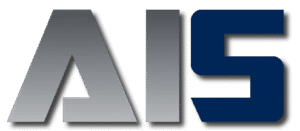iManage vs NetDocuments: Which Document Management System Is Right for Your Law Firm?
Choosing the right document and email management platform can make or break your firm’s efficiency, compliance posture, and client service. iManage and NetDocuments are the two dominant choices for legal DMS, each with mature capabilities and deep Microsoft 365 integrations. This week, we compare them head‑to‑head—features, governance, collaboration, costs, and fit—so you can make a confident, defensible selection aligned with your practice’s needs and risk profile.
Table of Contents
- Overview of the Platforms
- Features & Capabilities Comparison
- Compliance, Security & Risk Management
- Collaboration & Knowledge Sharing
- User Experience & Learning Curve
- Integration with Microsoft 365 and Legal Tools
- Pricing & Licensing Models
- Side‑by‑Side Comparison Table
- Pros & Cons of Each Solution
- Best Fit Scenarios
- Decision Framework: How to Choose
- Verdict
- Conclusion
Overview of the Platforms
iManage is a long‑time leader in legal document and email management. It offers cloud (iManage Cloud) and on‑premises options, with rich security, advanced ethical walls, AI‑powered search and classification (RAVN), records management, and robust administrative controls. Large law firms and enterprise legal teams often prefer iManage for its depth, configurability, and governance features.
NetDocuments is a cloud‑native, multi‑tenant SaaS platform built exclusively for the cloud. It emphasizes simplicity, rapid deployment, continuous updates, strong Microsoft integrations, and reliable performance at scale. Many small and mid‑sized firms (and increasingly larger ones) choose NetDocuments for its intuitive user experience and low infrastructure overhead.
Features & Capabilities Comparison
Both platforms deliver the core capabilities legal teams require: workspace‑based matter filing, email management, version control, metadata profiles, robust search, document security, audit trails, and Microsoft 365 integrations. The differences emerge in implementation style, governance depth, extensibility, and admin model.
iManage highlights
- Advanced governance: granular security policies, ethical walls, and sophisticated access controls via add‑on modules.
- AI and knowledge tools leveraging RAVN for classification, search enrichment, and insights.
- Flexible deployment: cloud, hybrid, or on‑premises to meet data residency or policy requirements.
- Records management for physical and electronic records; defensible disposition.
- External sharing via iManage Share and co‑authoring with Microsoft Office for the web.
NetDocuments highlights
- Cloud‑native simplicity with rapid rollouts and frequent feature updates.
- Strong email management, desktop integrations, and intuitive workspace organization.
- Governance options suitable for most firms, with matter‑centric security and DLP controls.
- Purpose‑built productivity add‑ons (e.g., templates, automation, and external collaboration workspaces).
- Low IT footprint and predictable cloud operations.
Compliance, Security & Risk Management
Legal departments face stringent requirements: confidentiality, regulatory obligations, client outside counsel guidelines (OCGs), and audit readiness. Both platforms provide encryption in transit and at rest, role‑based access controls, SSO/MFA, detailed audit logging, ethical wall capabilities, and regional hosting options.
iManage is known for deep security and governance. Its policy engines, ethical walls, and administrative tooling are highly configurable for complex access models, cross‑border matters, information barriers, and “need‑to‑know” restrictions. This level of control appeals to large firms, regulated industries, and organizations with intricate security or data segregation requirements.
NetDocuments delivers robust, cloud‑first security and governance appropriate for most firms. Its multi‑tenant architecture reduces infrastructure management while maintaining strong security baselines, data protection, retention policies, and defensible deletion options.
Expert insight: When intricate ethical walls, granular matter‑level policies, and advanced records controls are paramount, iManage’s governance tooling is a standout. For firms prioritizing speed‑to‑value and cloud simplicity without sacrificing core security, NetDocuments remains a compelling choice.
Collaboration & Knowledge Sharing
Modern client service requires seamless internal collaboration and secure support for external participants (co‑counsel, experts, clients). Both platforms handle check‑in/out, version control, and secure sharing.
- iManage: Enables co‑authoring via Office for the web, secure external sharing, and knowledge discovery via advanced search and AI enrichment. Strong fit for firms formalizing knowledge assets and complex precedent libraries.
- NetDocuments: Offers straightforward external collaboration spaces, easy workspace structures, and user‑friendly file/email capture—often reducing friction for attorneys and staff.
- iManage Path: Use iManage panel in Outlook → predictive suggestions (matter/workspace) → drag‑and‑file or one‑click file → policy applied → available in matter workspace.
- NetDocuments Path: Use email filing add‑in → suggested matter locations → one‑click file with metadata → instantly viewable in workspace and recent items.
User Experience & Learning Curve
NetDocuments is often praised for an intuitive interface, quick attorney adoption, and minimal overhead for everyday actions such as filing emails and retrieving recent documents. Its desktop connectors integrate directly into Office apps with familiar workflows.
iManage provides a modern web interface and desktop integrations, but its greater depth of controls can translate to a steeper learning curve for certain administrative tasks and advanced configurations. Many firms offset this with targeted training and governance playbooks that leverage iManage’s strengths.
Integration with Microsoft 365 and Other Legal Tools
Both platforms integrate deeply with Microsoft 365 (Outlook, Word, Excel, PowerPoint, and Teams) and support co‑authoring via Office for the web. Expect file/email capture from Outlook, profile metadata prompts, and save‑back into the DMS as matter‑centric records.
- Teams: Each platform supports structured links or tabs to matter workspaces and provides controls to avoid sprawl and preserve the DMS as the system of record.
- eSign and comparison tools: Integrations with leading eSignature and document comparison vendors are common paths on both platforms.
- APIs: Both offer APIs and partner ecosystems, enabling connections with practice management, timekeeping, and enterprise legal management tools. Verify vendor‑certified connectors for your stack.
For Microsoft 365‑centric firms, both options can deliver an integrated experience. The choice often hinges on whether you value iManage’s advanced governance plus optional on‑prem control, or NetDocuments’ cloud‑native simplicity with quick access and updates.
Pricing & Licensing Models
Both iManage and NetDocuments use subscription licensing with tiers and optional modules. Public list prices are uncommon; most firms receive tailored quotes based on user counts, storage, regions, and add‑ons (e.g., governance, records, AI, external collaboration). Consider these cost drivers:
- Base subscription: Per‑user licensing for core document and email management.
- Add‑ons: Governance, records, advanced security/ethical walls, analytics/AI, external collaboration.
- Migration and implementation: Data migration, taxonomy mapping, change management, and training.
- Ongoing operations: Support, administration time, and potential customizations or integrations.
NetDocuments’ cloud‑native model generally lowers infrastructure overhead. iManage can be cloud or on‑prem; large enterprises sometimes prefer on‑prem or private cloud for policy or integration reasons. In all cases, model total cost of ownership (TCO) for 3–5 years rather than comparing subscription lines alone.
Side‑by‑Side Comparison Table
| Aspect | iManage | NetDocuments |
|---|---|---|
| Deployment Model | Cloud, hybrid, or on‑premises | Cloud‑native, multi‑tenant SaaS |
| Governance & Ethical Walls | Highly granular, advanced policy engines | Strong governance for most firms; streamlined controls |
| Microsoft 365 Integration | Deep Outlook/Office/Teams integrations; co‑authoring | Deep Outlook/Office/Teams integrations; co‑authoring |
| Email Management | Predictive filing, robust Outlook panel | Predictive filing, intuitive add‑ins |
| AI/Knowledge | RAVN‑powered classification and search enrichment | Cloud search with productivity add‑ons; ongoing enhancements |
| Records Management | Advanced electronic/physical records options | Records and retention capabilities suited to most firms |
| External Collaboration | Secure sharing and co‑authoring via add‑ons | Straightforward collaboration spaces and sharing |
| Admin Complexity | Richer controls; more complex at scale | Simpler administration; less overhead |
| Pricing Approach | Subscription with optional modules; quote‑based | Subscription with tiers/add‑ons; quote‑based |
| Implementation Timeline | Can be longer for complex configurations | Often faster due to cloud‑native model |
| Ideal Profile | Large firms/enterprise legal with complex governance | Small to mid‑sized firms; also scalable to larger practices |
Pros & Cons of Each Solution
iManage
- Pros: Deep governance and ethical walls; flexible deployment; advanced records; powerful AI‑assisted knowledge; highly configurable.
- Cons: More complex administration; longer implementations; change management often required for maximum value.
NetDocuments
- Pros: Cloud simplicity; rapid adoption; frequent updates; low IT footprint; strong Microsoft 365 integrations out of the box.
- Cons: Less granular than iManage for the most complex security models; cloud‑only model may not satisfy certain on‑prem mandates.
Best Fit Scenarios
- Small Firms and Boutiques: NetDocuments often provides faster time‑to‑value with less admin overhead, especially for teams prioritizing intuitive email filing and quick rollout.
- Mid‑Sized Firms: Both are viable. If governance requirements are moderate and you want predictable cloud operations, NetDocuments is attractive. If you anticipate complex walls, cross‑border projects, or heavy records needs, iManage may be preferable.
- Large Firms and Enterprise Legal Departments: iManage’s advanced governance, records, and configuration depth align well with stringent compliance and information‑barrier scenarios. NetDocuments still fits if your governance model is simpler and you prefer pure cloud.
- Highly Regulated/Sensitive Matters: iManage’s policy tooling and deployment flexibility are strong differentiators.
- Microsoft 365‑Centric with Lean IT: NetDocuments’ cloud‑native design can reduce operational burden while delivering tight Office/Outlook/Teams experiences.
Decision Framework: How to Choose
Use this checklist to pressure‑test the fit for your firm’s risk, operational model, and client commitments:
- Governance complexity: Do you require advanced ethical walls, matter‑level restrictions, and nuanced cross‑office barriers?
- Deployment policy: Is cloud‑only acceptable, or do you need hybrid/on‑prem options to meet data residency or integration mandates?
- Email capture: Which platform makes it easiest for your attorneys to consistently file emails to matters?
- Microsoft 365 strategy: How central are Outlook, Teams, and Office in your workflow, and which DMS provides the most frictionless add‑ins?
- Records requirements: Do you need rigorous physical/electronic records management and defensible disposition?
- Knowledge & AI: Is AI‑assisted classification/search a priority for precedent retrieval and matter insights?
- External collaboration: How frequently do you share documents with clients/co‑counsel, and what user experience/security model do you prefer?
- Change management tolerance: Can you invest in training and governance playbooks, or do you need the fastest time‑to‑adoption?
- TCO and admin capacity: What’s your three‑to‑five‑year cost and staffing model, including migration, support, and integrations?
- Roadmap alignment: Which vendor’s updates and partner ecosystem best match your long‑term technology strategy?
Verdict
If your firm’s top priority is advanced governance, ethical walls, and records at enterprise scale, iManage stands out. Its configurability and depth suit complex security models, regulated environments, and knowledge‑driven practices—particularly in large firms and corporate legal departments.
If speed to value, usability, and cloud simplicity top your list, NetDocuments is a strong winner. It delivers an elegant attorney experience, low IT overhead, and reliable Microsoft 365 integrations suitable for small and mid‑sized firms, and many larger organizations with straightforward governance.
Both platforms are proven in legal. The “better” choice depends on whether you value iManage’s governance depth and deployment flexibility or NetDocuments’ cloud‑native agility and ease of adoption.
Conclusion
iManage and NetDocuments are the gold standard for legal DMS. iManage excels when compliance rigor and complex information barriers are non‑negotiable; NetDocuments shines when rapid deployment, intuitive email filing, and cloud efficiency drive the business case. Align the platform to your governance profile, Microsoft 365 strategy, and operational capacity—and model TCO over several years to avoid surprises.
Want expert guidance on improving your legal practice operations with modern tools and strategies? Reach out to A.I. Solutions today for tailored support and training.





